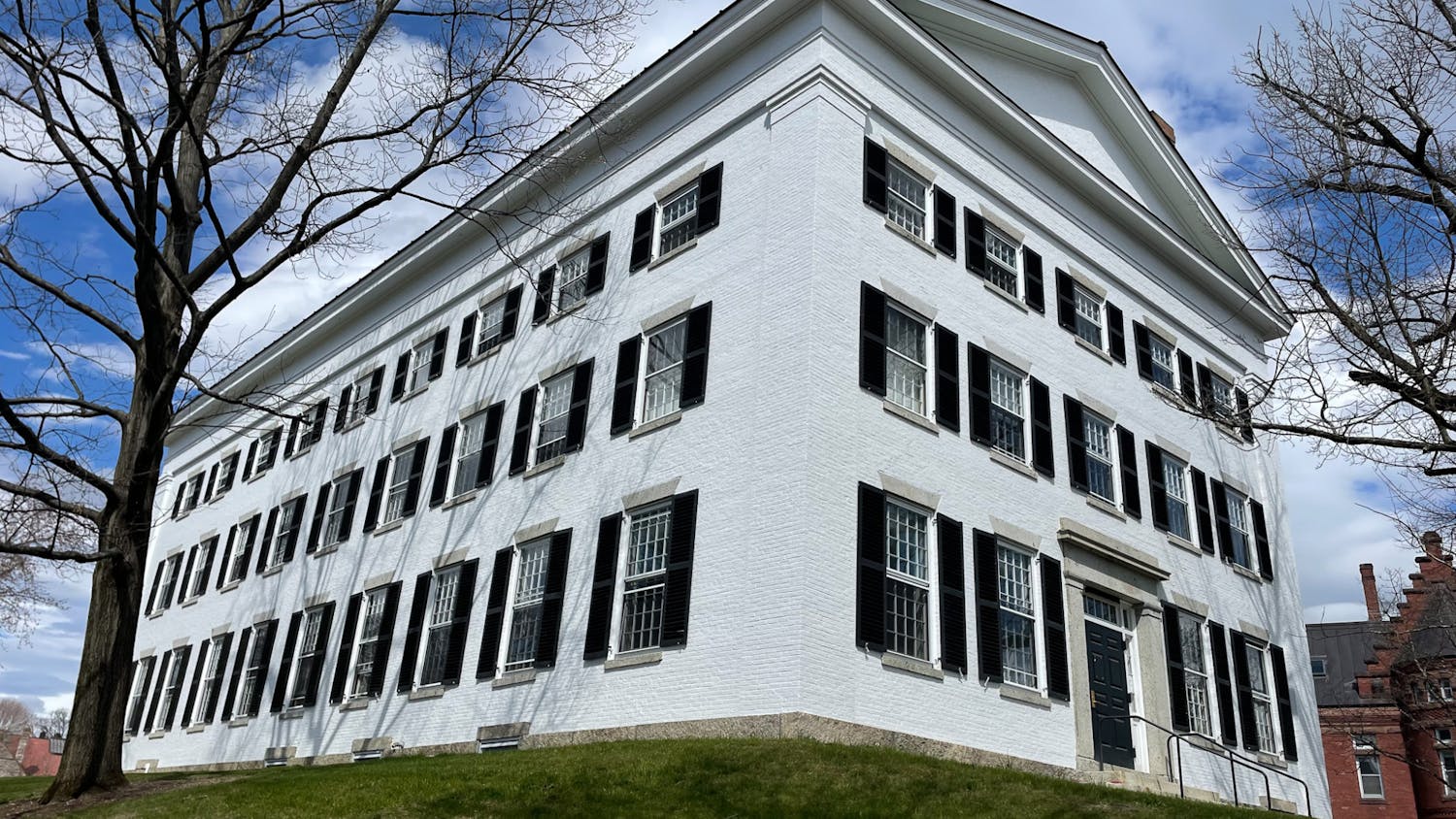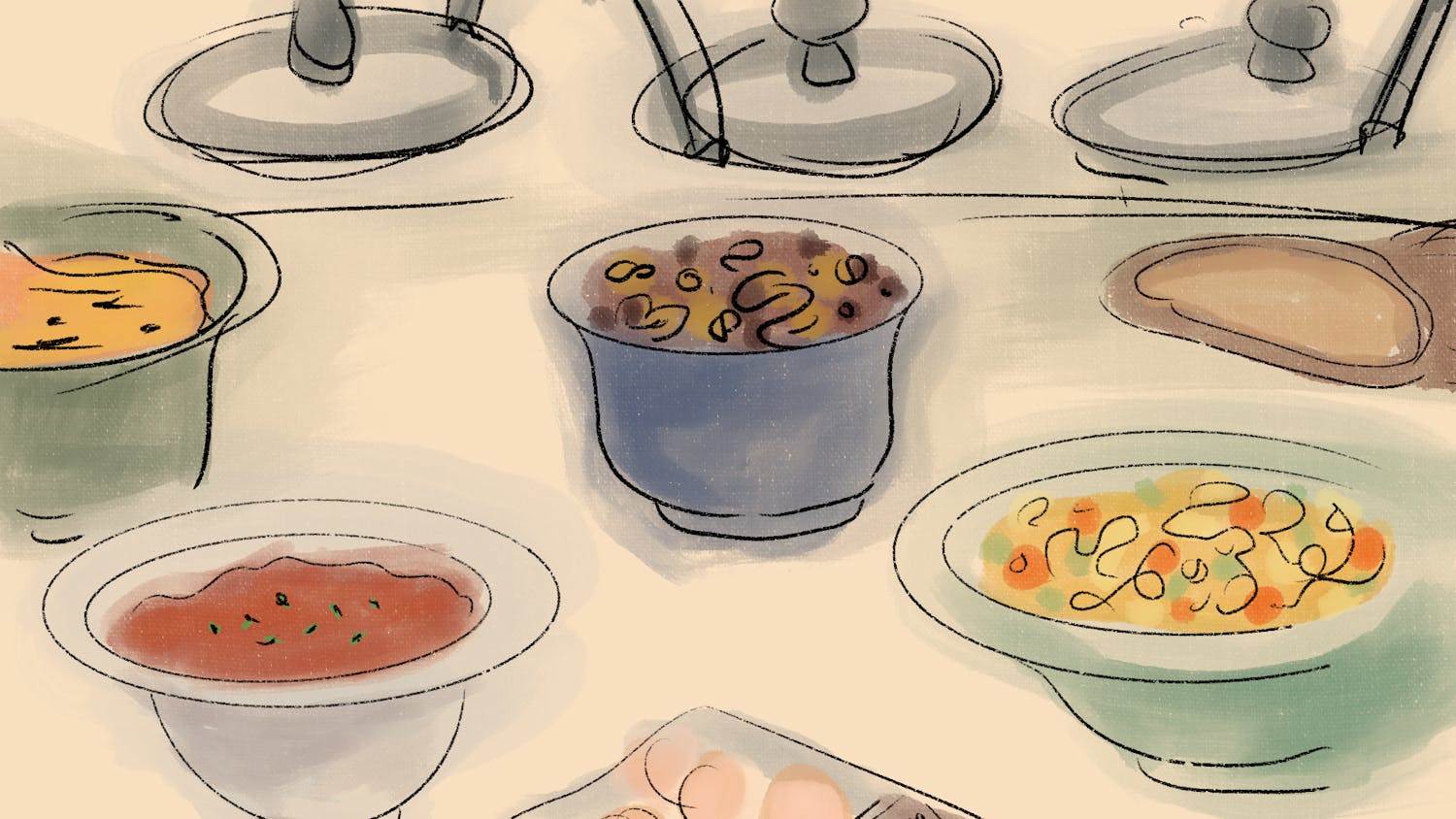Imagine a place where Dartmouth students can view anything from a Fiji mermaid to avant-garde art and Ancient Roman coins right on campus. That will soon become possible as the Hood Museum of Art re-opens on Jan. 26 after a three-year renovation.
“Almost any class could come to the Hood [Museum] and find something to look at as long as they’re open to talking about creativity and developing visual skills,” Hood Museum associate curator of academic programming Amelia Kahl said. “Classes can come to the museum for any number of reasons, those just being two examples.”
The Hood Museum has already jumped back into its academic programming. Previously, when the Hood Museum first opened in 1985, the Bernstein Study-Storage Center was created in 1989 to fit a maximum of 20 students into a museum classroom, which was carved out of a storage area.
There also used to be another smaller, 10-person classroom in the old museum, but most classes cannot fit in there, according to Katherine Hart, senior curator of collections and curator of academic programming. At the time, Hart was in charge of integrating the museum’s collection into academics at the College, a job she has now shared with Kahl since 2011.
The old Bernstein Study-Storage Center could be described as “behind-the-scenes,” “tight,” “hard to navigate” and overall a space that was not especially “conducive” to learning, according to Kahl.
The renovated Hood Museum will house the Bernstein Center for Object Study, which will comprise three dedicated study galleries with a flexible design. Each is outfitted with hanging slats on the walls, tables on wheels that can be rolled and locked, chairs, art storage space and screens that can be lowered and then hidden completely. One of the galleries will contain a document camera.
“We talked to faculty a lot and they spoke about how [although] they wanted the technology there ... [they also wanted] it to be able to go away and just let students focus on the art,” Kahl said.
There is also a new staging room, which makes it safer for the objects and easier for the museum employees to transport art to and from learning spaces inside the Bernstein Center for Object Study. The Hood Museum has hired three new art handlers who will facilitate bringing objects from storage into the study galleries and assist students in learning from the art.
The Hood Museum has four departments it works with regularly — art history, studio art, anthropology and classics — but when it closed for renovation in the spring of 2016, it was working with 35 different academic departments and programs across campus.
“So with that activity, that energy, we knew we could do more, but just didn’t have the space,” Kahl said, adding that the renovation was inspired by the need to better support the museum’s work.
This term, Art History 62.3, “Japanese Prints,” taught by art history professor Allen Hockley, meets every class period in the Hood Museum. With the old Hood Museum, it was not possible for any class to consistently meet in the museum because it would then be unable to accommodate visiting classes during those periods.
“I’m really excited for [the Hood Museum opening] because other than Carpenter Hall, there’s not really a space where art history people can spend time,” “Japanese Prints” student and art history major Arianna LaBarbiera ’21 said. “There wasn’t really a place in Hanover where I could have art in my life outside of the classroom.”
However, LaBarbiera said that in the “Japanese Prints” course, there are opportunities every class to view a couple of prints, either from Hockley’s personal collection or the Hood Museum’s collection.
“We get to see art pieces during almost every lecture as opposed to trekking to the Hopkins Center for the Arts three times in the term like it was done previously,” Emmanuel Akosah ’19 said.
LaBarbiera said that in the context of art history, it is important to see what is being discussed.
“Seeing the vibrancy of color and the dimensions are so crucial and can’t be seen in a textbook,” she said.
When learning about hand scrolls, an extremely long piece of illustrated paper, the class was able to see how someone in the period of the piece’s creation would have actually interacted with the art.
“The professor was rolling one side up and rolling the other side out,” LaBarbiera said. “It was really nice because I wouldn’t have thought about it that way if I hadn’t seen it.”
Another student in the class, Farid Djamalov ’21, also emphasized the usefulness of interacting with the art in person. Djamalov added that the class is being encouraged to think about how the Hood Museum can expand its collection for academic purposes.
“While the Hood Museum already has great works in its collection, there are large gaps in the collection that we hope to fill by proposing to the museum what works to buy,” Djamalov said.
Other classes across campus are evolving with the re-opening of the museum. The Writing 5 class “Food for Thought,” is changing its syllabus from previous terms to integrate a future museum visit with the course. According to the syllabus, students in the class will be doing a reading reflection and analyzing artifacts in the museum.
“I think it’s really hard to grasp that materiality of [certain things] until you see the physical items,” Kahl said.
She said that the museum’s partnerships with specific classes arise in two ways. Professors can approach the museum with ideas on a possible integration. Alternatively, Hart or Kahl read syllabi and propose ideas to different faculty members.
“We talk about what objects we have and about pedagogy,” Kahl said.
One of the most unexpected relationships in the past was working with an engineering class looking at comparative technologies from different cultures, Kahl said. Another interesting collaboration was with a psychology class that studied why humans believe what they believe, she added. Artifacts such as a mastodon molar and a bottle of horseradish that was recovered from a failed South Pole expedition were used as discussion points.
Students can ask for any object to be brought out for viewing and can get involved in Hood Museum activities through campus engagement coordinator Isadora Italia.
“Now [students] know they’re in a good space and they can really just come in and enjoy the art,” Kahl said.
LaBarbiera is a member of The Dartmouth staff.



